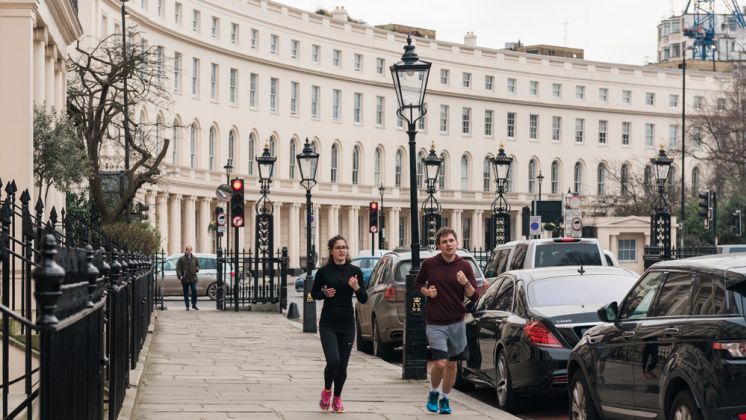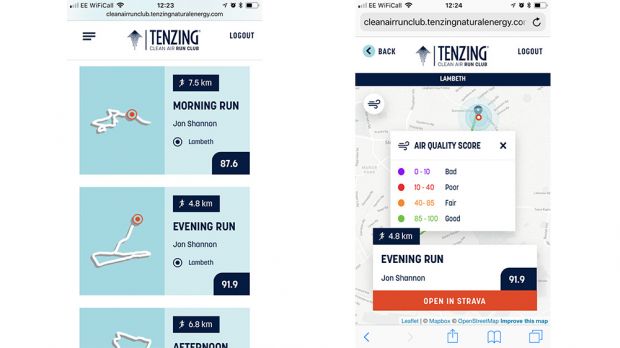How Runners Can Avoid Air Pollution In London
A new smartphone tool matches live air quality data to routes on Strava

Air pollution is scary. We’d go so far as to say horror-movie scary. Think about it this way: you could be killing yourself right now just by breathing – save yourself, stop breathing, STOP BREATHING!
Obviously that’s hysterical and please continue breathing normally, but it remains a worry and one that’s not particularly well understood by the public. Is air pollution so bad, for instance, that you should avoid running in certain conditions? Thankfully, on this point the scientific research has an answer. “A study conducted by Audrey de Nazelle at Imperial College looked at this specific question of when the disbenefit of exposure to pollution outweighs the exercise benefits,” says Andrew Grieve, senior air quality analyst at King’s College London. “The study found that pollution levels in London and other European cities are low enough that running and cycling is always beneficial.”
But if you want to avoid running through heavily polluted areas (and who doesn’t?), energy drink brand Tenzing has partnered with Strava and the Environmental Research team at King’s College London to help. This collaboration has produced a tool that shows the current quality of air along any route a runner is planning on following in London, or the state of air pollution on a London run they’ve tracked on Strava. (It’s limited to the capital because it relies on data from the team at King’s College, which tracks air pollution every 25m throughout Greater London.)
The free tool is available if you visit the Clean Air Run Club website on a smartphone and once you’ve given it permission to access your Strava account, it’ll add a clean air score to any runs done in London.

It’s also possible to draw routes by tapping on a map to add waypoints and get a live air quality score. What you’ll quickly discover is that high-traffic areas are best avoided.
“It’s mainly major roads that tend to have the worst pollution in cities,” says Grieve. “If you zoom out and look at the pollution map of London, you can pick out the road network as the highest areas. It’s a similar picture in most cities.”
See related :
- Five Tips For Minimising The Risks Of London’s Air Pollution
- Air Pollution Could Be Ruining Your Sleep
And Grieve’s own research shows walking along a polluted thoroughfare has an impact. “We did a study a few years ago which looked at the lung function of people with COPD [a lung condition] before and after walking down Oxford Street versus going around Hyde Park,” says Grieve. “We found that those who walked down Oxford Street had reduced lung function compared with those who walked around Hyde Park. A clear physiological effect to higher pollution exposure.”
Get the Coach Newsletter
Sign up for workout ideas, training advice, reviews of the latest gear and more.
One problem we found with the tool was that our air pollution ratings never dipped below the high end of the “fair” category. So would finding routes that increase the rating out of 100 by a point or two make much difference?
We asked Grieve how much benefit there is in taking a less polluted route over a more polluted one. “Aside from the Oxford Street study, it’s hard to quantify the health benefits of taking a low-pollution route vs a busy one at an individual level as everyone is different,” he says. “What we can say is that pollution levels are generally about 50% less on back streets compared to busy roads, and parks are even lower.”
Try the Clean Air Tool (mobile only)

Jonathan Shannon was the editor of the Coach website from 2016 to 2024, developing a wide-ranging experience of health and fitness. Jonathan took up running while editing Coach and used the training plans on the site to run a sub-40min 10K, 1hr 28min half marathon and 3hr 6min marathon. He’s an advocate of cycling to work and is Coach’s e-bike reviewer, and not just because he lives up a bit of a hill. He also reviews fitness trackers and other workout gear.
